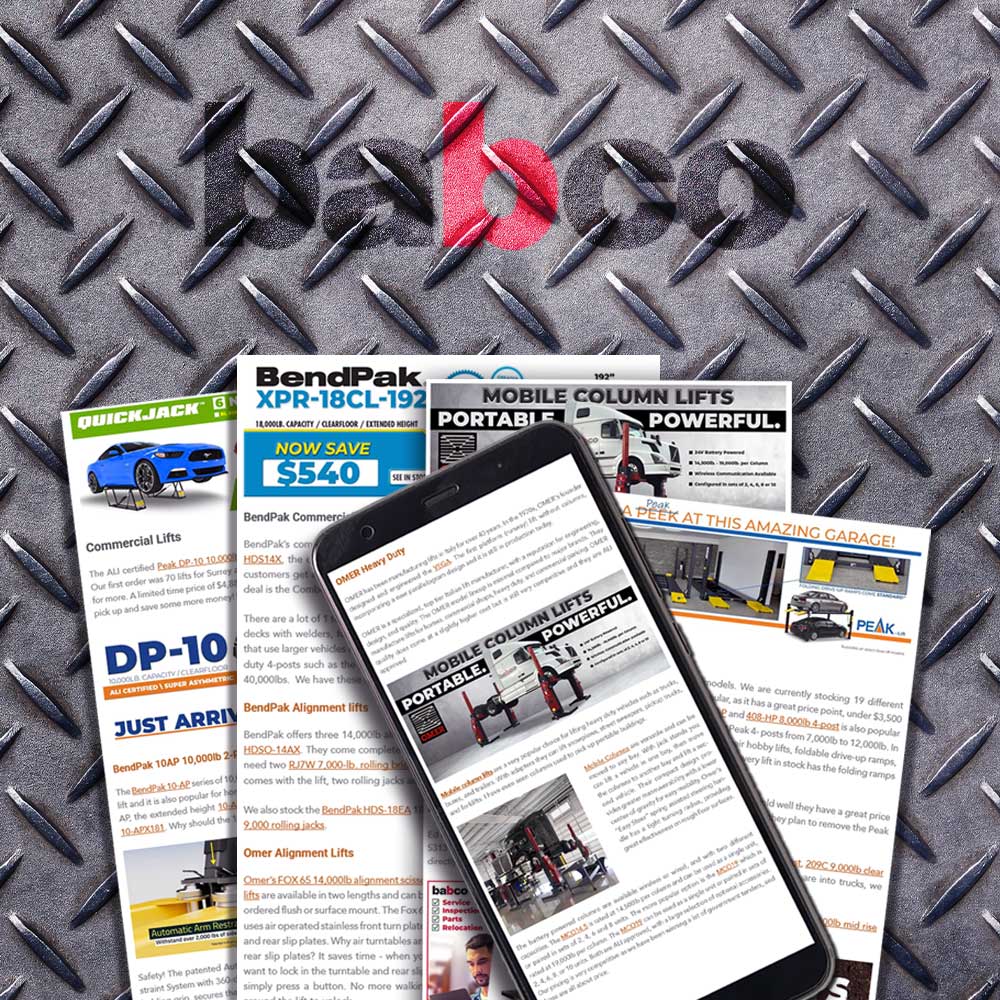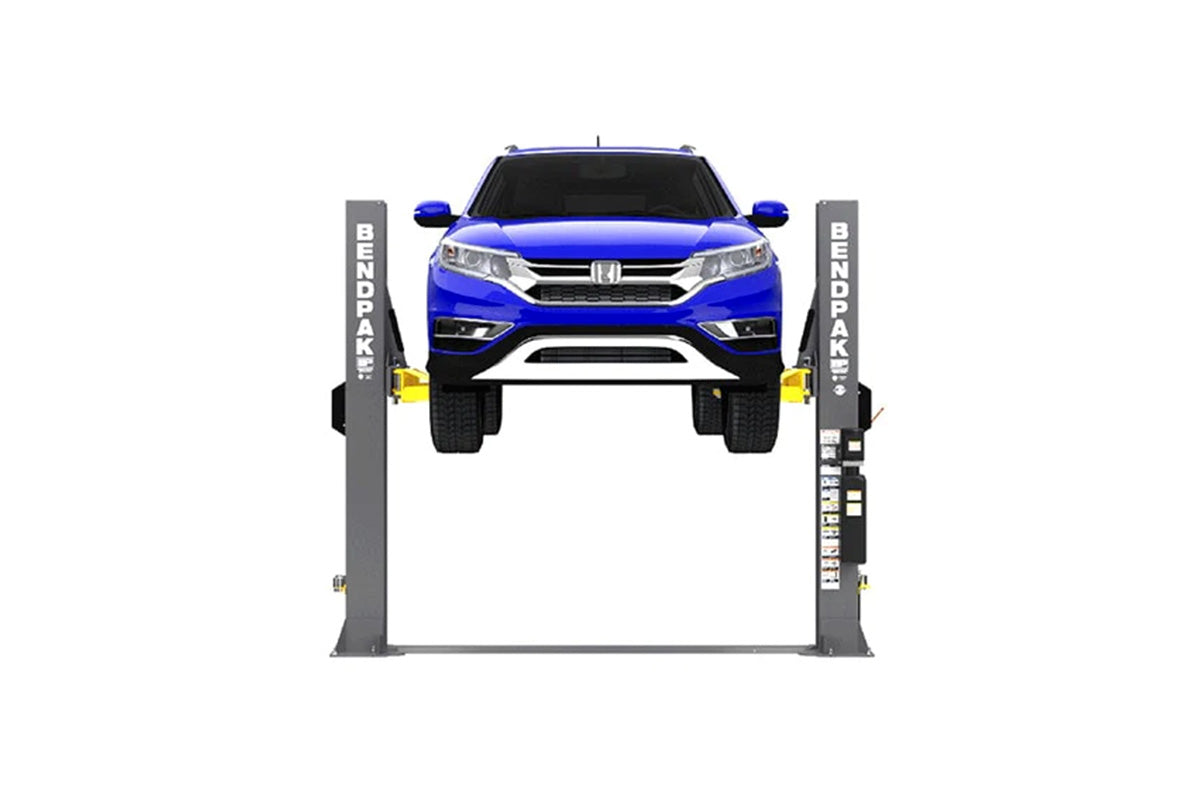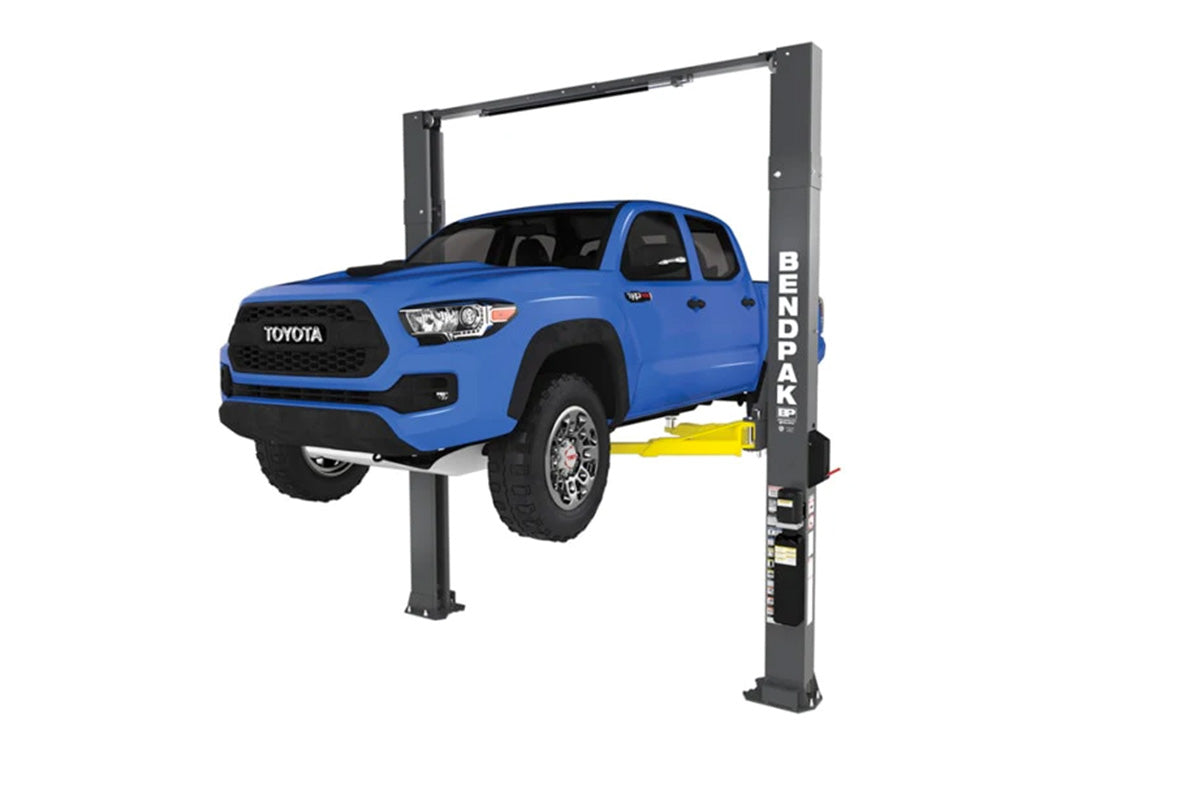Which Two-Post is Right for You?
2-Post Lift Guide
Which Two-Post lift is Right for you?
Two-post lifts are the most common type of lift in commercial shops, as they provide unrestricted access to the underside of the vehicle and the wheels. Additionally, they cost less and take up much less floor space than a four-post. Below we will cover some basic styles and terms of two-post lifts, and continue on with some of the features that we consider make BendPak the most desirable two post lift on the market. The discussion below primarily relates to 10,000-lb capacity lifts, as this is most common in the industry.
Lift capacity is only one thing to consider when buying a lift. Babco's line of BendPak lifts offer increased reliability and versatility, in addition to impressive lifting capacity. Each lift comes in a variety of widths and heights. The Clearfloor two-post car lift models (e.g., XPR-15CL, XPR-18CL) provide unobstructed floor space. This design makes it easy for technicians to move toolboxes, transmission jacks, oil drains and other automotive equipment under the elevated vehicle.
However, if you have a low ceiling or find yourself lifting high-profile trucks and vans, you may want to opt for a floorplate two-post lift model. These are made without overhead obstructions, which increases headroom. You may even want to open a vehicle's doors while it's still on the car lift. In that case, you'll definitely want to check out an asymmetric car lift. No matter your auto equipment needs, Babco supplies a BendPak high-capacity two-post lift ready to ship and install to your garage. Many of the lifts are ALI Certified, so please ask us if you aren't sure.
Note that weight capacity has nothing to do with whether or not a vehicle lift is certified. From the hydraulics design to the quality of the lift carriage; from the telescoping arms to the single-piece column construction, BendPak never, ever skimps on quality and we here at Babco are proud to be the exclusive Canadian distributors for these world renowned lifts.
Clearfloor
In the world of automotive lifts, the clearfloor design offers distinct advantages by ensuring a clutter-free work area and providing efficient equipment performance. One key aspect of this design involves the positioning and function of the hydraulic hose and equalization cables, which are crucial for the operation of the lift. Here's a breakdown of the features:
Key Benefits of Clearfloor Design:
- Hydraulic Hose and Equalization Cables:
These essential components are routed through a specially designed metal bar that spans the top of the two columns, keeping the floor free of obstructions. This thoughtful layout ensures that the workspace remains open and easy to navigate. - Top Metal Bar:
This crossbar is specifically engineered to serve as a conduit for the hose and cables. It does not bear any of the lifting load, which means it is purely functional for cable and hose management, without affecting the strength or safety of the lift system. - Safety and Efficiency:
By placing the hydraulic hose and equalization cables at the top, this design minimizes the risk of damage or interference during lift operations, enhancing both safety and operational efficiency. - Unobstructed Workspace:
With no components running along the floor, mechanics and technicians benefit from an uncluttered area, improving mobility and workflow around the lift.
This design is ideal for service shops looking to optimize both space and safety without compromising on the strength and reliability of their equipment.
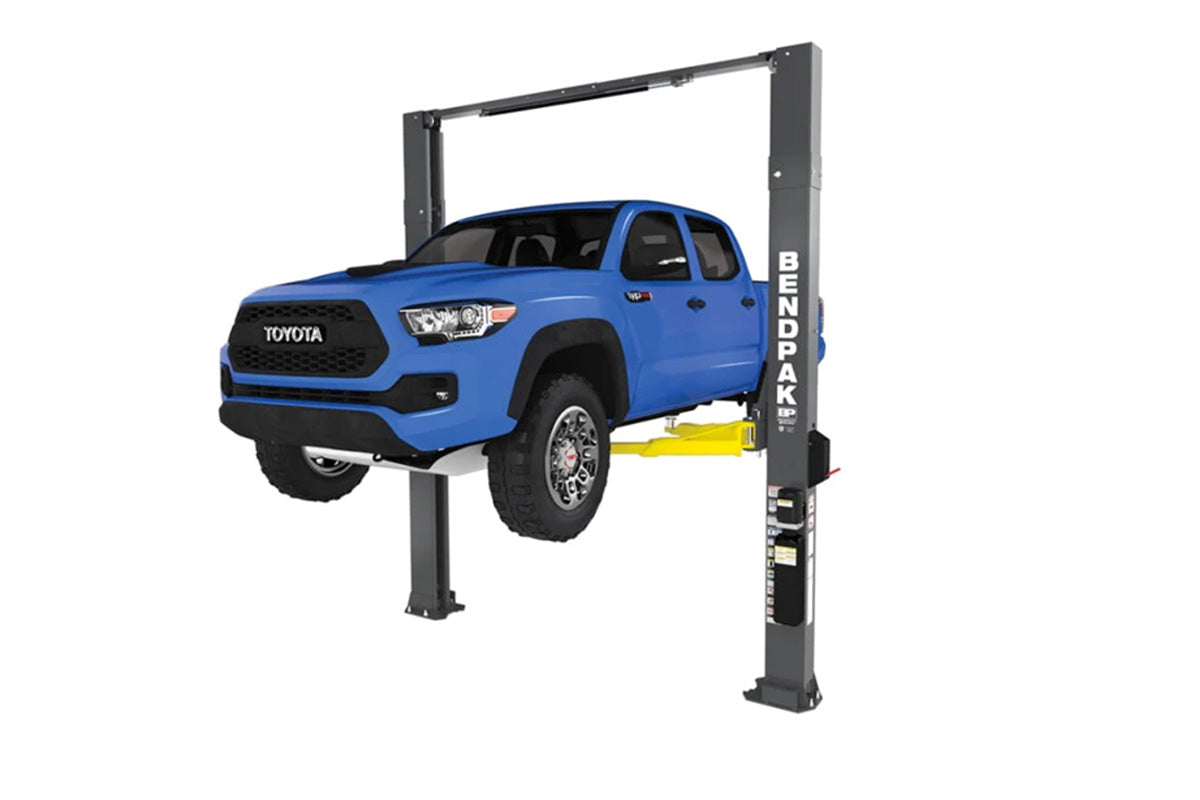
FloorPlate
When choosing a vehicle lift, the design plays a critical role in determining its suitability for various shop configurations and vehicle types. One highly effective option for shops with space constraints is the floorplate model. This design is characterized by the routing of key components, such as the hydraulic hose and equalization chain, along the ground, covered by a durable steel floorplate. This layout offers distinct advantages for specific work environments.
Key Features of the Floorplate Design:
- Hydraulic Hose and Equalization Chain:
Benefits of a Floorplate Lift Design:
- Ideal for Low-Ceiling Shops:
- Enhanced Compatibility with Longer Vehicles:
- Unobstructed Vehicle Access:
- Durability and Protection:
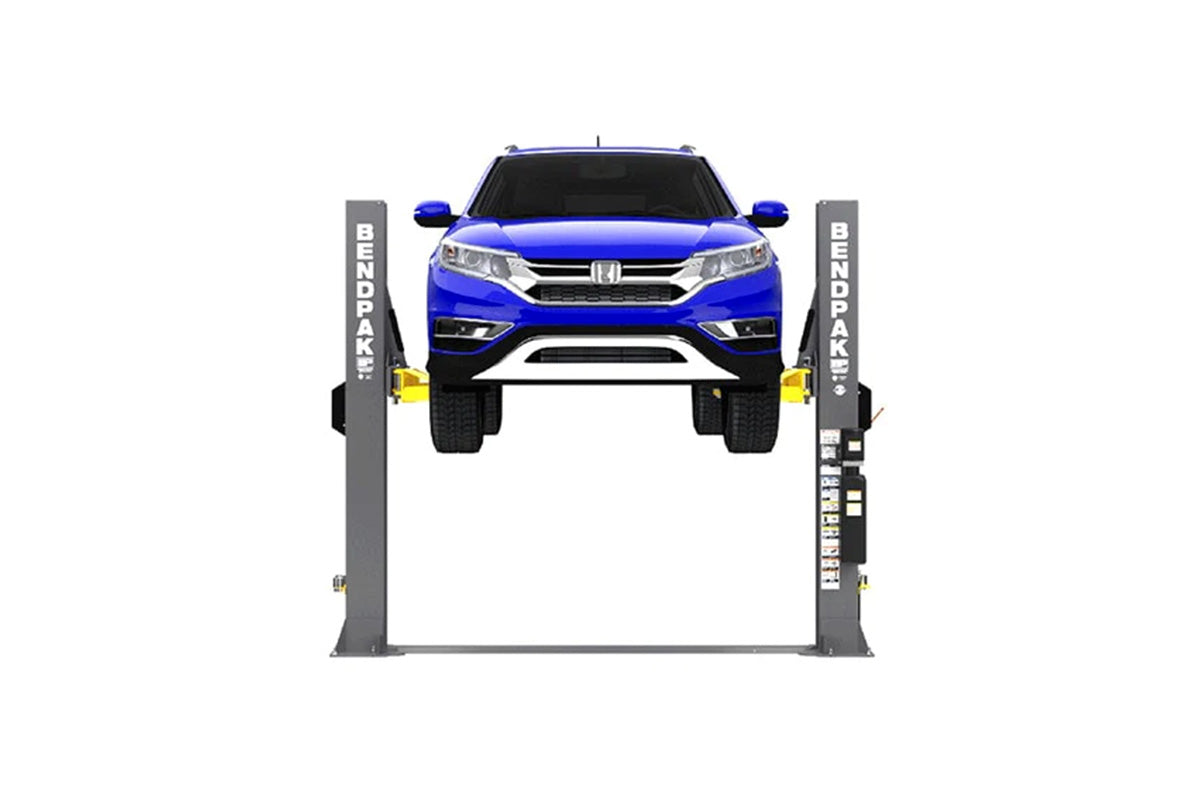
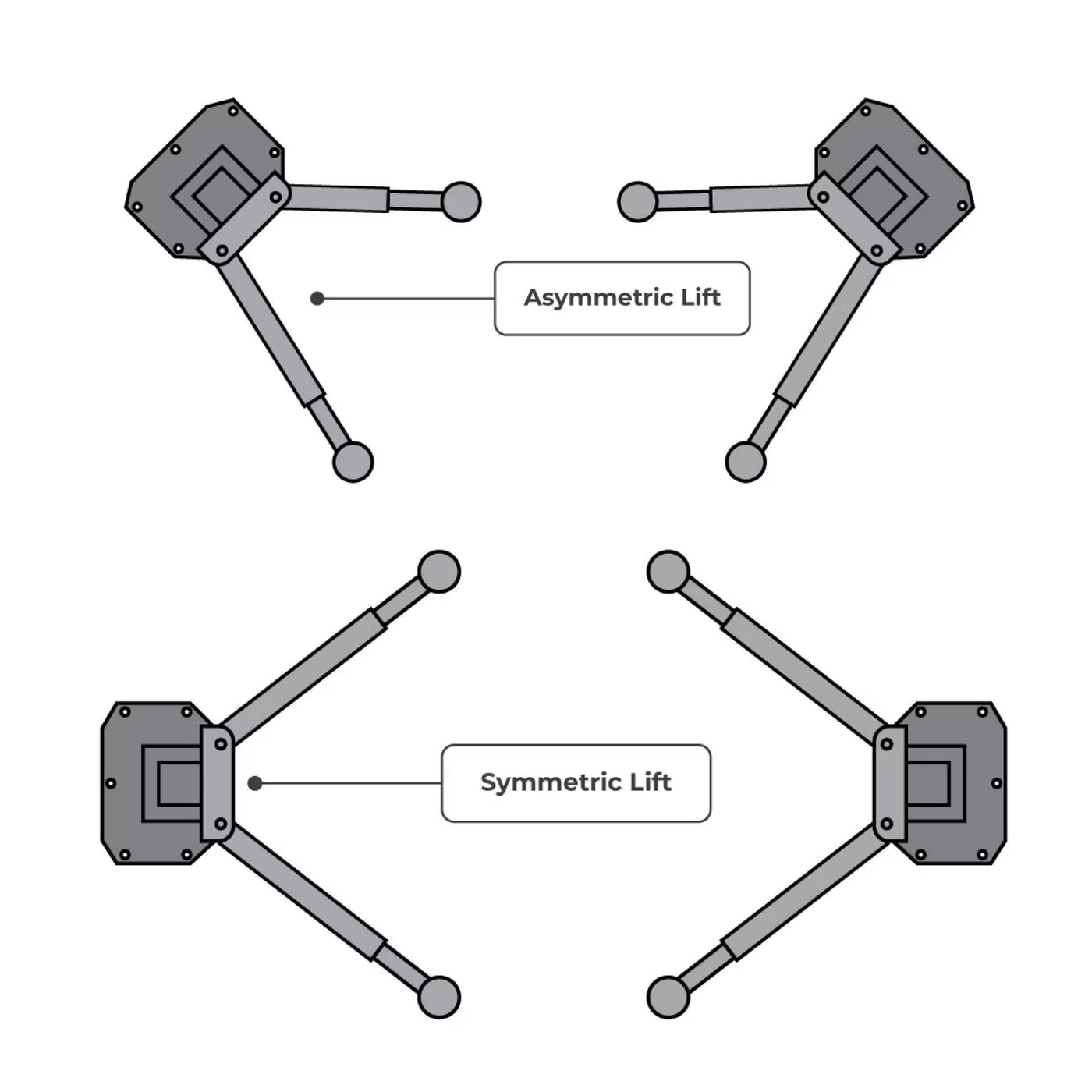
Asymmetric VS Symmetric
2-post lifts are either considered symmetrical or asymmetrical. Symmetric lifts are easy to identify because the posts or columns face each other dead-on, and the support arm assemblies each hold 50% of the load. Asymmetrical lifts feature arms that are shorter in the front and usually have 30° rotated columns enabling better clearance for vehicle doors and giving the operator direct access to the automobile interior while raised but usually have a narrower drive-thru clearance, which may be a disadvantage if your mainly working on wider vehicles such as pick-up trucks.
Asymmetric 2-Post Lift
An asymmetrical lift has uneven-length lift arms and require the vehicle to be positioned with 30% of the length past the front columns and 70% past the rear columns. Most FWD vehicles fall under this category with most of their weight being in the front, so an asymmetric lift can lift with weight evenly distributed. With columns that are usually rotated 30 degrees, an asymmetric lifts allows for easier access to the inside of a vehicle, making them a great choice for busy shops who are constantly bringing vehicles on and off the lift throughout the day and need to perform electrical and diagnostic work.
Symmetric 2-post lift
An asymmetrical lift has uneven-length lift arms and require the vehicle to be positioned with 30% of the length past the front columns and 70% past the rear columns. Most FWD vehicles fall under this category with most of their weight being in the front, so an asymmetric lift can lift with weight evenly distributed. With columns that are usually rotated 30 degrees, an asymmetric lifts allows for easier access to the inside of a vehicle, making them a great choice for busy shops who are constantly bringing vehicles on and off the lift throughout the day and need to perform electrical and diagnostic work.

Questions? Contact Us!
If you have any questions at all about the benefits of a clearfloor or floorplate model 2-post lift, please contact our knowledgeable sales staff and they would be happy to discuss your lifting needs and aid you in making the right decision for your shop or garage.
